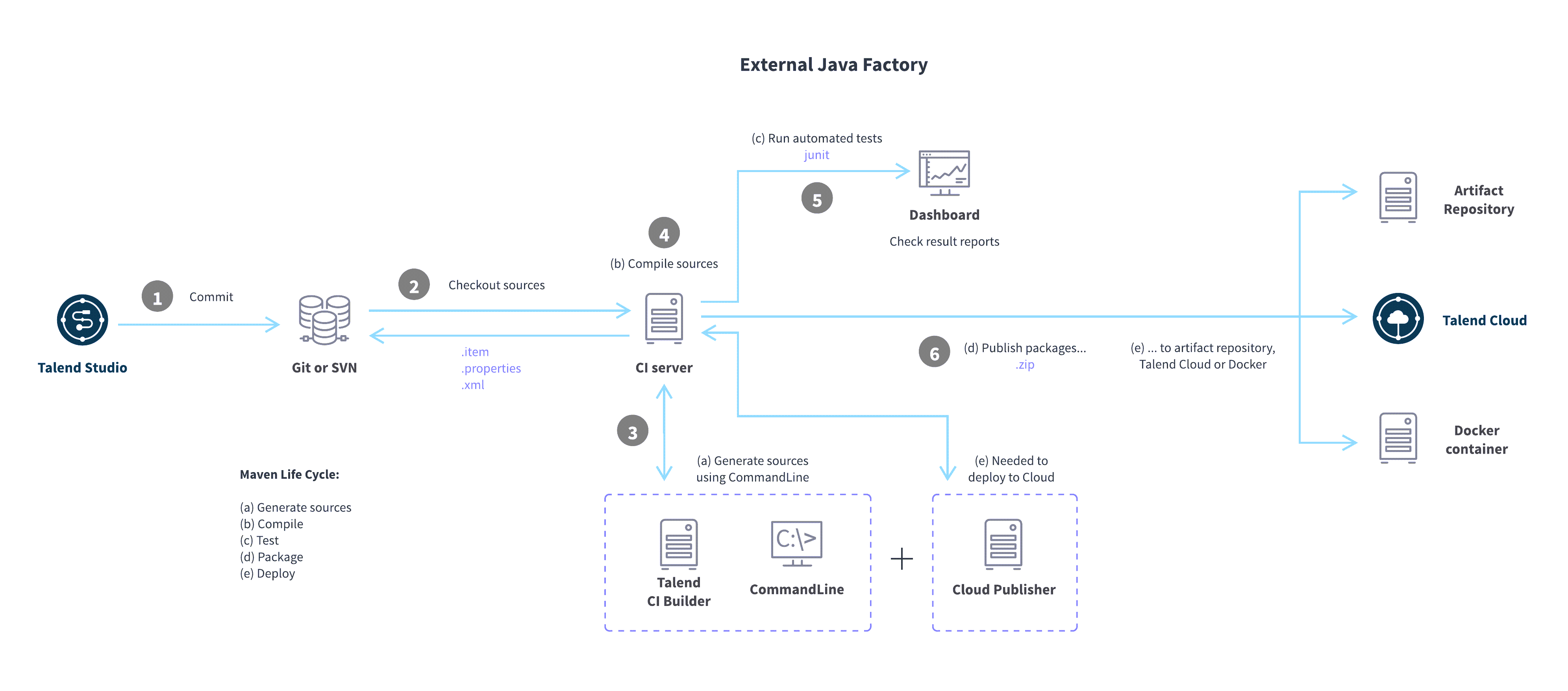Implementation in your environment

-
1 and 2 (Git): Version and Revision Control
Committing: Developers design Jobs, Routes, Services, and Tests in Talend Studio and commit them to Git.
Checking out sources: Git is linked to the Continuous Integration server that checks out the artifacts and Tests sources in the form of .item and .properties files as well as the corresponding pom.xml files pre-generated by the CommandLine.
-
3 to 6 (in external Java factory): Maven Build, Continuous Integration and Deployment
Generating sources: The Talend CI Builder and Talend CommandLine tools generate the Git sources and pass them to the Continuous Integration server that is used (Jenkins for example).
Compiling sources: An automated build is launched on the server to compile sources (transformed to Java classes).
Testing: Automated builds are launched on the server to execute Tests, and the server dashboard allows you to monitor and audit code quality before packaging.
Packaging and publishing: Once the Tests are executed and the bugs are fixed, items are packaged and published either on Talend Management Console using Talend Cloud Publisher, in an artifact repository in the form of .zip files or in a Docker container as a Docker image.
The versioned release candidate is then deployed to Production.
Continuous Integration and Deployment ensure a quick, effective, automated, and safe deployment to Production.
